-
 New productLook Keo cleats for automatic pedals
New productLook Keo cleats for automatic pedals- €10.90
-
 New productLook KG76 pedals
New productLook KG76 pedals- €39.99
-
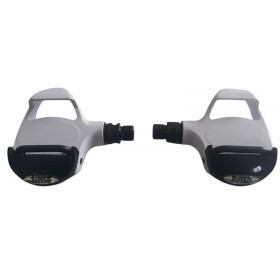 New productTime Mid clipless pedals
New productTime Mid clipless pedals- €20.99
-
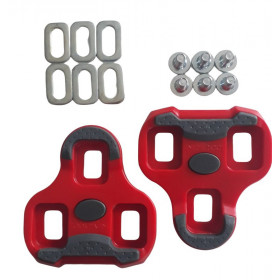 New product -30%Look Keo grip cleats red for clipless pedals
New product -30%Look Keo grip cleats red for clipless pedals- €11.87
- €16.95
-
 New product -50%Toe clip pedals
New product -50%Toe clip pedals- €10.00
- €19.99
-
 New product -37%Shimano SPD SL cleats for clipless pedals
New product -37%Shimano SPD SL cleats for clipless pedals- €14.17
- €22.49
-
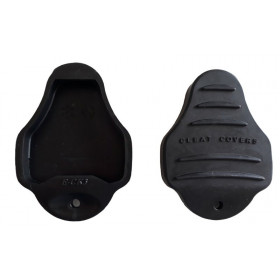 New product -50%Keo look cleat protectors
New product -50%Keo look cleat protectors- €4.75
- €9.50
-
 New productPedals MKS Japan Prime Sylvan stream black
New productPedals MKS Japan Prime Sylvan stream black- €22.99
-
 New product -35%Look Delta cleats
New product -35%Look Delta cleats- €9.74
- €14.99
-
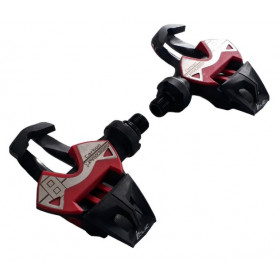 New product -31%Time Xpresso Carbon 8 clipless pedals
New product -31%Time Xpresso Carbon 8 clipless pedals- €97.97
- €141.99
-
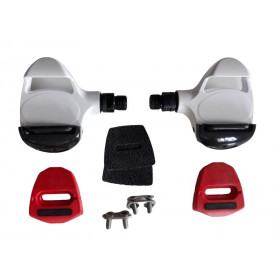 New productTime Mid clipless pedals white with cleats
New productTime Mid clipless pedals white with cleats- €24.99
-
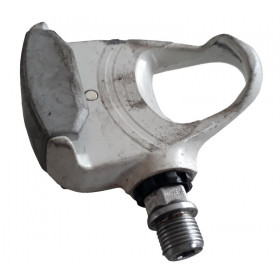 UsedLeft pedal Look Arc PP156
UsedLeft pedal Look Arc PP156- €4.99
-
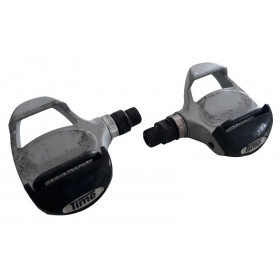 UsedTime Mid clipless pedals grey used
UsedTime Mid clipless pedals grey used- €9.99
-
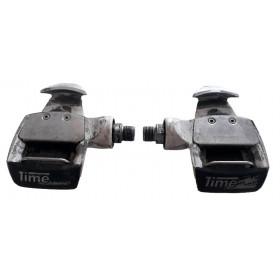 UsedClipless Pedals Time Challenge Pro
UsedClipless Pedals Time Challenge Pro- €6.99
-
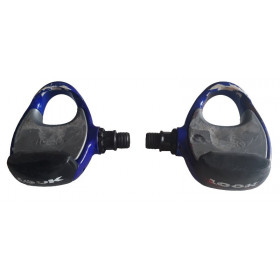 UsedLook KG76 Hinault pedals
UsedLook KG76 Hinault pedals- €6.99
-
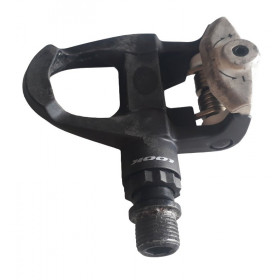 UsedLook Keo carbon right pedal
UsedLook Keo carbon right pedal- €13.99
-
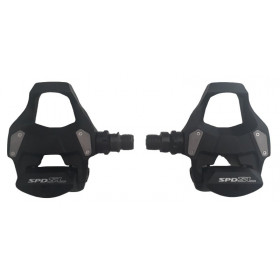 New product -28%Shimano pedals PD-RS500
New product -28%Shimano pedals PD-RS500- €40.31
- €55.99
-
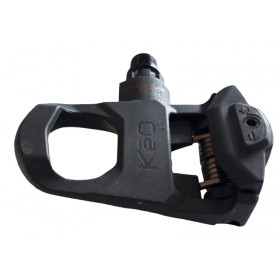 New productLook Keo classic left pedal alone
New productLook Keo classic left pedal alone- €9.99
-
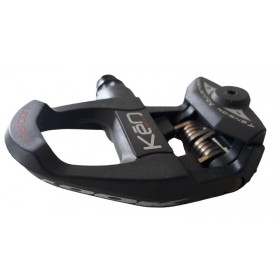 New product -50%Look Kéo carbon left pedal
New product -50%Look Kéo carbon left pedal- €25.00
- €49.99
-
 New productPedals Shimano 600
New productPedals Shimano 600- €34.99
-
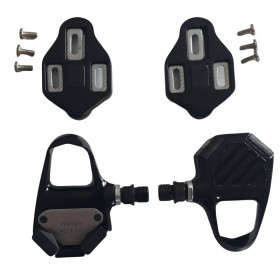 New productWellgo RC-9101 clipless pedals black
New productWellgo RC-9101 clipless pedals black- €19.99
-
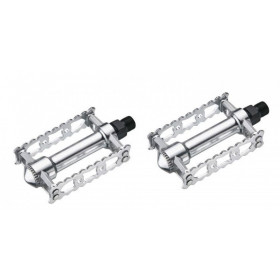 New productPedals aluminium VP-365 vintage
New productPedals aluminium VP-365 vintage- €16.99
-
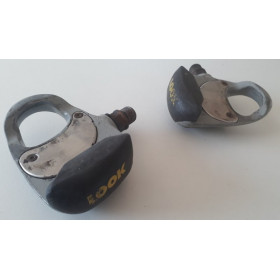 UsedLook PP256 pedals
UsedLook PP256 pedals- €7.99
-
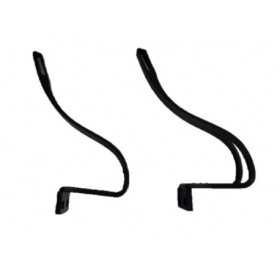 New productRoad bike resin toe clips
New productRoad bike resin toe clips- €3.15
-
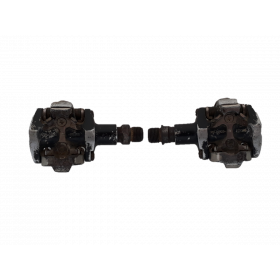 UsedShimano PD-M505 automatic pedals
UsedShimano PD-M505 automatic pedals- €4.49
-
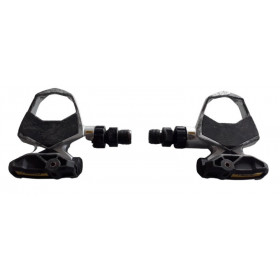 UsedRoad clipless pedals Mavic Sprint
UsedRoad clipless pedals Mavic Sprint- €12.77
-
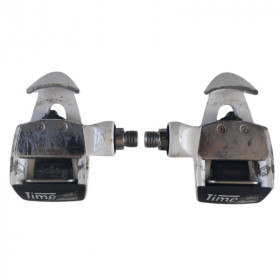 UsedPedals Time Challenge Pro
UsedPedals Time Challenge Pro- €9.99
-
 New product -45%Time Iclic xpresso xpro cleats for clipless pedals
New product -45%Time Iclic xpresso xpro cleats for clipless pedals- €10.99
- €19.99
-
 UsedShimano 105 PD 5610 pedals
UsedShimano 105 PD 5610 pedals- €6.99
-
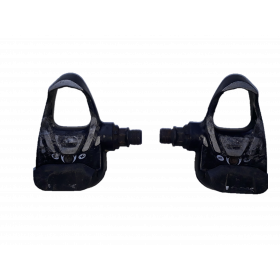 UsedLook PP136 pedals
UsedLook PP136 pedals- €5.99
-
 New product -25%Wellgo R3 automatic pedals for road bike
New product -25%Wellgo R3 automatic pedals for road bike- €14.99
- €19.99
-
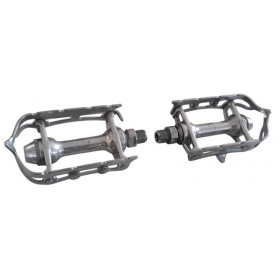 More detailsNew product Out-of-StockSpidel pedals
More detailsNew product Out-of-StockSpidel pedals- €29.99
-
 More detailsNew product Out-of-StockTime TBT pedals cleats
More detailsNew product Out-of-StockTime TBT pedals cleats- €18.99
-
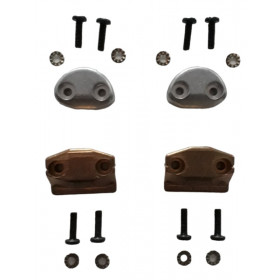 More detailsNew product Out-of-StockTime Challenge pedals cleats
More detailsNew product Out-of-StockTime Challenge pedals cleats- €18.99
-
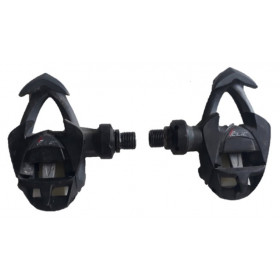 More detailsUsed Out-of-StockTime Iclic Carbon automatic pedals
More detailsUsed Out-of-StockTime Iclic Carbon automatic pedals- €19.99
-
 More detailsNew product Out-of-StockMaillard CXC pedals
More detailsNew product Out-of-StockMaillard CXC pedals- €24.99
-
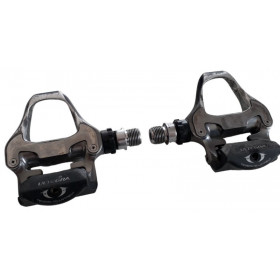 More detailsUsed Out-of-StockShimano Ultegra PD-6620 pedals
More detailsUsed Out-of-StockShimano Ultegra PD-6620 pedals- €11.99
-
 More detailsNew product Out-of-StockLook pedals Bioline
More detailsNew product Out-of-StockLook pedals Bioline- €29.99
Showing 1-38 of 38 item(s)
How to choose the right road bike pedals ?
Among the essential components of a road bike, the road bike pedal plays a key role in power transfer and pedaling comfort. Whether you're a recreational cyclist or a seasoned competitor, choosing the right road bike pedals is crucial to get the most out of every pedal stroke.
Below is a detailed and informative guide to the different categories of pedals for road bikes, tailored for both beginners and experienced riders, while also integrating important SEO keywords around “road bike pedal”.
The different types of road bike pedals
Choosing the right road bike pedal depends primarily on your experience level, cycling goals, and the type of rides you plan to do. There are two main categories of pedals on a road bike, each with its own features, advantages, and limitations.
1. Flat pedals: simplicity and accessibility
Flat pedals are the most basic type in the road cycling pedal category. They feature a flat platform on which you simply rest your foot, with no attachment mechanism.
Advantages:
-
Ease of use: No need for specific cycling shoes or cleats. You can ride with regular sneakers.
-
Beginner-friendly: They help you learn the basics of pedaling technique without technical constraints.
-
Ideal for urban riding: In city environments where frequent stops are necessary (traffic lights, intersections), flat pedals offer maximum freedom of movement.
Limitations:
-
Lower efficiency: Without a foot retention system, you can only push the pedal down, not pull it up. This reduces overall power transfer.
-
Less foot support: On long rides or steep climbs, your foot may shift, leading to decreased efficiency and comfort.
Flat pedals are best suited for leisure riding, urban commuting, or riders just starting out with road cycling. They are also a good choice for hybrid or gravel bikes where versatility is a priority.
2. Clipless road bike pedals: performance and efficiency
Clipless road pedals have become the standard for regular or performance-focused cyclists. They allow your cycling shoes to clip into the pedal using a cleat mounted under the sole, creating a rigid connection between foot and pedal—ideal for maximizing pedaling efficiency.
Advantages:
-
Maximized power transfer: Because your foot is securely attached, you can both push and pull during the pedal stroke, increasing your overall energy efficiency.
-
Improved stability: Your foot stays in an optimal position throughout the pedaling cycle, reducing energy loss and enhancing performance.
-
Comfort on long rides: Force is distributed over a larger contact area, reducing muscle fatigue and improving joint comfort.
Functionality and compatibility:
-
Each brand (Look, Shimano SPD-SL, Time, etc.) offers its own clipless road pedal system with unique cleat designs.
-
Road cycling shoes must be compatible with these cleats, typically using a stiff sole with a three-hole mounting system.
-
Many clipless pedals offer adjustable release tension: lighter for beginners, firmer for competitive cyclists.
Limitations:
-
Learning curve: The first few rides can be intimidating. You'll need to master clipping in and out quickly, especially during sudden stops.
-
Dedicated gear required: This system requires an additional investment in road cycling shoes and ongoing maintenance of the cleats, which wear down over time.
What about hybrid pedals ?
There are also dual-sided or hybrid pedals that offer the best of both worlds, ideal for versatile riders. These road bike pedals have a flat platform on one side and a clipless mechanism on the other. They allow you to switch between regular shoes and clipless cycling shoes depending on your ride.
This type of pedal is perfect for commuters, touring cyclists, or recreational riders who want flexibility without giving up performance.
Whether you go for flat pedals for their simplicity or clipless road bike pedals for their performance, your choice of road bike pedal should always match your cycling practice. In all cases, a quality pedal is a crucial link in the road bike drivetrain, ensuring a smooth, efficient connection between you and your machine.
By choosing the right pedals, you’ll improve not only your power transfer, but also your comfort, safety, and overall riding experience.
Technical features of a road bike pedal
Before choosing a road bike pedal, it’s essential to understand the technical elements that influence performance, comfort, and compatibility with your equipment. Here are the main criteria to consider when selecting your road bike pedals, depending on your experience level, riding goals, and pedaling style.
1. Weight: every gram counts
The weight of a road bike pedal plays a crucial role—especially for cyclists riding in the mountains or looking to minimize overall bike weight. On average, a pair of clipless road pedals weighs between 200 and 300 grams, but high-end carbon models can drop below 150 g per pair.
Reducing weight on this constantly rotating component can have a noticeable impact on overall pedaling efficiency and responsiveness. The lighter the pedal, the more it contributes to the dynamic performance of your drivetrain.
2. Platform surface: Stability and power transfer
The size of the contact surface is a key factor in both pedaling comfort and power transfer. A clipless road pedal with a wide platform distributes pressure more evenly across the sole, which:
-
Reduces hot spots (often felt on long rides),
-
Improves power transfer between your foot and the road bike crankset,
-
Offers greater lateral stability—especially during sprints or high-intensity efforts.
Powerful riders and long-distance cyclists will benefit from pedals with a broad support base, typically used with stiff-soled road cycling shoes for optimal efficiency.
3. Retention system: cleat and shoe compatibility
The compatibility between pedals, cleats, and road cycling shoes is essential. Each brand has its own pedal-cleat interface standard:
-
Look Kéo: widely used and appreciated for its light weight and simplicity.
-
Shimano SPD-SL: known for durability and a great balance between foot retention and angular freedom.
-
Time Iclic / Xpresso: offers greater lateral float, appreciated for joint comfort.
These systems require specific road shoes with a 3-bolt pattern on the sole to accommodate cleats. Always check compatibility between your road bike pedals, cleats, and shoes before purchasing.
4. Tension adjustment: customizing release force
Many clipless road bike pedals allow you to adjust the spring tension that controls cleat release. This setting determines how much force is needed to unclip your foot:
-
Low tension: ideal for beginners, allowing easier release—especially useful at traffic stops.
-
High tension: preferred by experienced riders, providing a firmer foot hold during sprints or aggressive riding.
Some brands also offer cleats with variable float, allowing slight lateral foot movement to better accommodate each rider’s biomechanics.
5. Materials: balancing strength and lightness
The construction of a road bike pedal typically combines several materials, directly affecting weight, durability, and performance:
-
Aluminum body: durable and affordable—a solid choice for regular cyclists.
-
Reinforced composite/nylon: lightweight and budget-friendly, commonly used in entry-level pedals.
-
Carbon fiber: extremely light and stiff—featured in top-tier pedals for competitive performance.
For the axle:
-
Chromoly steel: offers strength and long-term durability.
-
Titanium: even lighter than steel, but at a higher cost.
The choice of materials depends on the desired balance between performance, weight, and budget—as well as the intensity of your riding.
When selecting your road bike pedals, don’t rely solely on brand or looks. Analyze the technical specifications according to your needs: weight, platform size, retention system, tension adjustment, and materials all directly affect your comfort, efficiency, and safety on the road.
A good pair of clipless road bike pedals, suited to your body mechanics and pedaling style, quickly becomes a vital asset in your cycling performance.
Why switch to clipless road bike pedals ?
If you ride regularly, investing in clipless road bike pedals is a strategic decision that can transform your cycling experience. This type of road pedal creates a direct connection between your shoe and the bike through a cleat system, providing numerous benefits in terms of performance, comfort, and safety.
-
Significant improvement in efficiency
The main advantage of clipless road bike pedals is optimal power transfer. Unlike flat pedals, where only the downward push phase is used, the clipless system allows:
-
Smooth 360° pedaling: you push on the downstroke and pull on the upstroke.
-
Better muscle engagement: all muscle groups are used more harmoniously.
-
Reduced energy loss: every watt produced is efficiently transmitted to the road bike crankset and then to the rear wheel.
The result: higher efficiency, especially on long rides, false flats, or climbs. This is a measurable gain for any cyclist aiming to improve.
-
Precise and consistent foot positioning
One of the major advantages of clipless road pedals is the shoe locking mechanism via cleats. This system allows:
-
Perfect alignment of the foot on the pedal,
-
Consistent foot position with every pedal stroke,
-
Prevention of unwanted movements that can cause pain in the knee, ankle, or hip.
With properly adjusted road bike pedals, you reduce the risk of injuries caused by poor foot placement or misalignment. This is a real added value for joint comfort and biomechanics.
Some cleats also offer angular freedom (called “float”), allowing the foot to pivot slightly during pedaling — a real plus for cyclists who need mobility or suffer from joint tension.
-
Improved safety and enhanced control
This may seem counterintuitive to beginners, but riding with clipless road pedals also increases safety:
-
Foot stability: no more slipping of the sole on the pedal in wet, sweaty, or rough road conditions.
-
Responsive handling out of the saddle: the foot remains firmly attached to the pedal, improving control during sprints or accelerations.
-
Confidence on descents: you won’t lose contact with the pedal at high speeds, which reduces stress and improves bike handling.
Admittedly, there is a short learning curve to quickly clip in and out, especially when stopping. But after a few rides, this action becomes instinctive. Many models also offer adjustable release tension, ideal for beginners or cautious riders.
Clipless pedals: a must-have on the road
Today, clipless road bike pedals are the standard among regular cyclists, whether passionate amateurs or competitive riders. They naturally integrate into a complete setup that includes:
-
Stiff-soled road cycling shoes,
-
Cleats compatible with the chosen pedal system (Look, Shimano SPD-SL, Time, etc.),
-
Personalized adjustments based on the rider’s body shape and preferences.
Adopting clipless road bike pedals is a significant step forward in your cycling journey. It also signals that you want to optimize your performance, comfort, and overall feel on the bike.
Switching to clipless pedals means choosing a more committed, precise, and efficient style of cycling. By firmly connecting the rider to their machine, these road pedals improve energy efficiency, ensure better posture, and provide safety and stability on every ride. It’s a natural evolution for any enthusiast looking to get the most out of their equipment—and their legs.
Compatibility with road bike cranksets
Road bike pedals are attached to the crank arms via a standard thread. They are interchangeable as long as the standard is respected (9/16” for most). It is important to check pedal compatibility with your crankset, especially if you use older or specialized equipment.
Compatibility with road bike cranksets: what you need to know before changing your pedals
When choosing a road bike pedal, it’s not enough to focus solely on the cleat system or the material. It’s also essential to ensure compatibility with the road bike crankset on which it will be mounted. Here’s everything you need to know to avoid installation errors and guarantee perfect integration between your road pedals and crank arms.
A standard thread… But important to know
The vast majority of road bike pedals are designed to fit an international standard thread:
-
Diameter: 9/16” x 20 threads per inch (TPI).
This standard is used by nearly all manufacturers of modern cranksets (Shimano, SRAM, Campagnolo, Rotor, etc.).
So, in most cases, you can install clipless road pedals from different brands on a standard crankset without any mechanical compatibility issues.
Thread direction: a crucial detail
Pedal threading is reversed on one side:
-
Right pedal (drive side): normal threading (clockwise to tighten).
-
Left pedal: reverse threading (counterclockwise to tighten).
This system prevents the pedal from loosening while riding. When installing or removing your bike pedals, use an appropriate wrench (usually 15 mm) and apply some grease or anti-seize paste on the threads to facilitate maintenance.
Compatibility with older or specialized cranksets
Although 9/16” threading is now the norm, some vintage or specialized bikes (vintage road bikes, BMX, kids’ bikes, special cranksets) may use a ½” thread. These cases are rare but should be checked if you ride with equipment that is:
-
Old (road bikes made before the 1980s),
-
Niche or custom-built,
-
Very old entry-level models.
In such cases, your clipless road pedals cannot be mounted directly without an adapter or crankset replacement.
Carbon crankarms: additional precautions
If your road bike crankset has carbon crankarms, take some extra precautions:
-
Always use a protective washer between the pedal and crankarm if recommended by the manufacturer.
-
Never overtighten: follow the specified torque (usually between 35 and 40 Nm).
-
Regularly check the tightness and condition of the threading, as carbon, while very stiff, can be damaged by improper installation.
Clipless pedals and chainline
Although the threading is compatible, not all road bike pedals have the same axle length. This variation affects the pedaling stance (Q-factor), meaning the distance between your feet. A pedal with a longer axle can:
-
Provide more space between the crankarms and your shoes (beneficial for certain anatomies),
-
Change your position and biomechanical alignment.
To optimize comfort and performance, choose clipless road pedals with an axle length suited to your anatomy and pedaling preferences.
Most road bike pedals use a 9/16” thread, which is standard and compatible with most modern cranksets.
Always check compatibility with your crankarms, especially on older bikes or unusual models.
Respect the thread direction, torque settings, and specific precautions for carbon crankarms.
Consider the axle length of clipless pedals to maintain proper posture and enhance your comfort on the bike.
Road pedal maintenance and lifespan: adopt the right habits
Often overlooked in overall bike maintenance, road bike pedals play a central role in power transmission and pedaling comfort. To keep them performing smoothly, efficiently, and safely, regular maintenance is essential—just like with the crankset, chain, or derailleurs.
Why maintain your road bike pedals?
Like any moving bike part, road pedals endure:
-
strong mechanical stresses with every pedal stroke,
-
exposure to the elements (rain, dust, mud, winter salt, etc.),
-
gradual wear of bearings and contact surfaces.
Without maintenance, you risk:
-
bearing deterioration,
-
annoying lateral play,
-
loss of pedaling efficiency,
-
or even axle seizure or breakage.
1. Regular cleaning after rides
After each ride, especially in bad weather, it’s recommended to clean your pedals with clear water:
-
Use a soft sponge or a soft-bristled brush,
-
Avoid high-pressure jets directly on the axle or bearings,
-
Thoroughly dry with a clean cloth.
This prevents dirt buildup in the clipless pedal mechanisms that could hinder clipping in/out or accelerate wear.
2. Lubrication of the axle and springs
Once or twice per season, apply a drop of light oil or bike-specific grease on the pedal axle and spring mechanism:
-
Rotate the pedal manually to evenly distribute the lubricant,
-
Wipe off any excess to avoid attracting dust.
This simple step prolongs the lifespan of your road pedals and ensures smooth rotation.
3. Checking bearings and play
Road pedals usually have ball or cartridge bearings, sometimes sealed. To check their condition:
-
Spin the pedal by hand: it should rotate freely, quietly, and without rough spots,
-
Check for any lateral play between the axle and pedal body.
Excessive play can indicate bearing wear or axle loosening. Some pedals (Look, Shimano SPD-SL, etc.) allow partial disassembly for bearing greasing or replacement. If unsure, have a professional inspect them.
4. Wear on cleats: a key safety factor
Road bike cleats, usually plastic, wear down over kilometers and stops (especially walking). Worn cleats can cause:
-
play in the clip-in mechanism,
-
accidental unclipping,
-
loss of stability while pedaling.
Signs it’s time to replace cleats:
-
a floating sensation on the pedal,
-
less precise or noisy clipping,
-
visible wear on the cleat tabs or rounded edges.
Check cleat screws regularly (tightness and corrosion) and replace cleats every 5,000 to 10,000 km depending on your riding habits.
5. Average lifespan of road pedals
The lifespan of clipless road pedals depends on several factors:
-
usage frequency (occasional, regular, intensive),
-
weather conditions (rain, mud, salt),
-
build quality (aluminum, composite, carbon),
-
maintenance diligence.
Generally speaking:
-
A well-maintained mid-range pedal can last 30,000 to 50,000 km,
-
High-end models (Look Keo Blade, Shimano Dura-Ace, etc.) have exceptional longevity if cared for,
-
Entry-level pedals or those heavily exposed to harsh conditions may require more frequent replacement.
Pro Tip: adopt a simple routine
Clean your pedals after wet or dirty rides.
Lightly lubricate the axle every 2 to 3 months.
Check for play and smooth rotation every 1,000 to 2,000 km.
Replace your cleats at the first signs of wear.
Check pedal tightness on the crankset every 5,000 km.
Properly maintaining your road bike pedals extends their lifespan, keeps your pedaling smooth and safe, and helps you avoid unpleasant surprises on the road. Like all road bike components, they deserve your attention: a small regular maintenance effort is much better than premature replacement. And to keep your clipless road pedals in perfect condition, prevention is key!
Conclusion
Choosing the right road bike pedals improves your performance, comfort, and safety on every ride. Clipless road pedals have transformed road cycling by providing a smooth, efficient connection between the rider and their bike. Whether it’s a high-end carbon pedal or a more affordable composite model, every cyclist can find the pedal that fits their level and riding style.
Additionnal article :
Best road bike pedals
